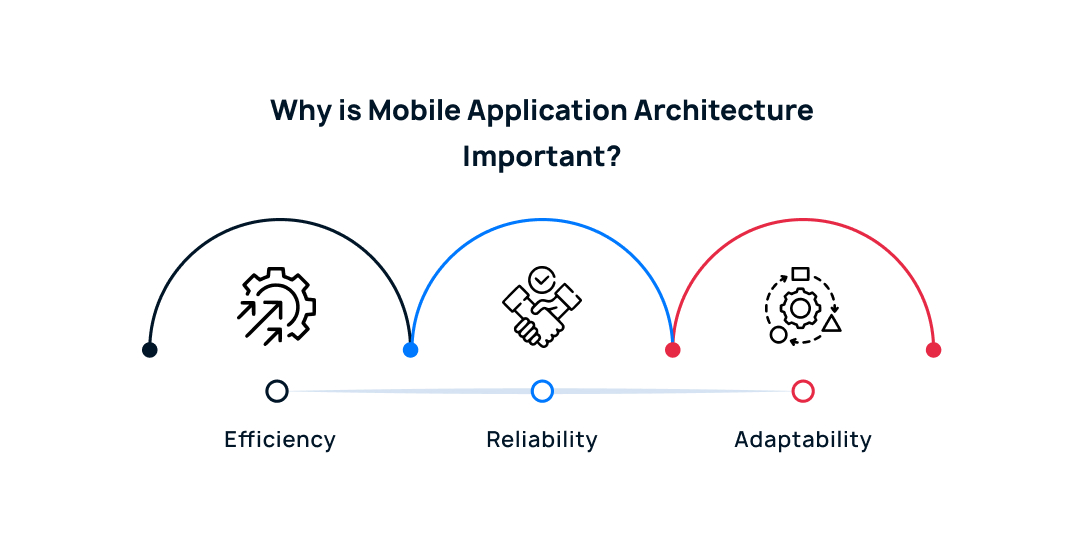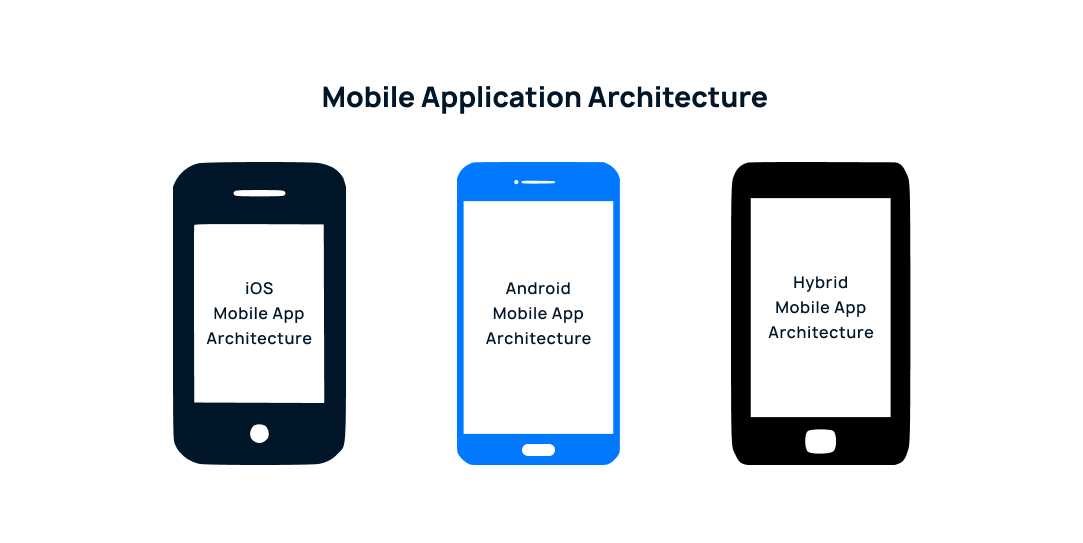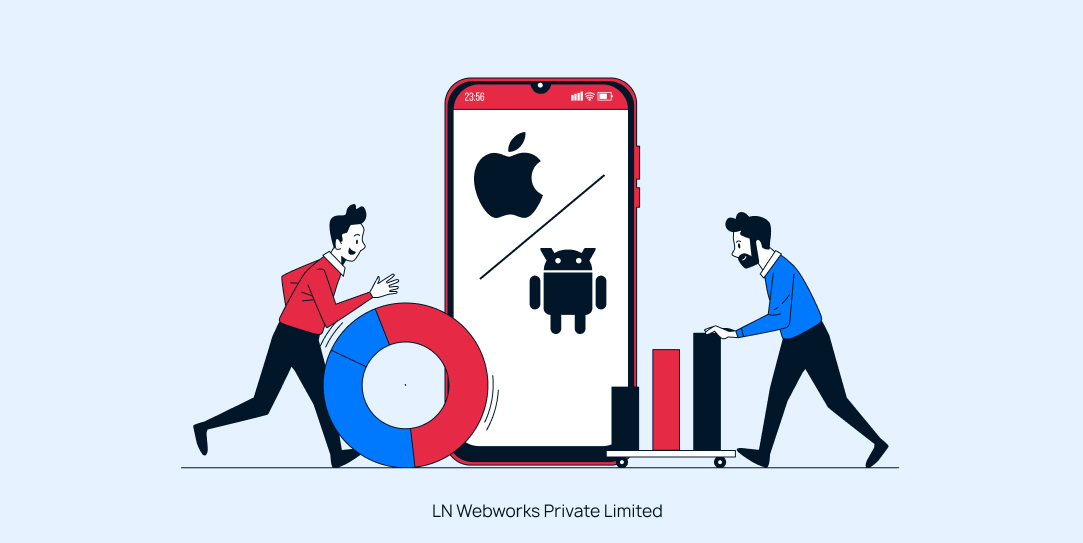Subscribe To Our NewsLetter
Share This Post:
Using smartphones has become a daily habit ingrained in our lives. Using a mobile phone or app has become so common that when you have a moment alone, you simply open it and tap into your favorite app.
Ever wondered why you enjoy using apps so much and what about them convinces you to spend your time using them? The unified User Interface (UI), combined APIs, and mashed-up databases. We refer to this as “Mobile app architecture”.
What is Mobile app architecture?
The structural layout and arrangement of an application for mobile devices, known as mobile app architecture, describes how different parts and components of the app are related to one another and cooperate to accomplish the app’s goals.
It provides the structure for creating, sustaining, and growing a mobile application, acting as a template for the process.
Mobile app architecture defines how information is processed, displayed to consumers, and interacted with. It consists of multiple levels or parts, each with distinct duties. It is essential to the functionality, scaling, reliability, and security of the application.
Important elements of mobile application architecture
- UI (user interface)
- APIs
- Databases
Why is mobile application architecture important?
When developing any kind of application, whether it is web or mobile, you need to ensure that each component is developed to a high standard. The quality of a mobile app might be compromised by even the tiniest issues that may occur during the architecture creation process.
Every well-known iOS and Android application has a very dependable mobile application architecture and attracts a large number of users. Mobile application architecture is important when it comes to efficiency, reliability, and adaptability.

Efficiency
It guarantees that an application can handle the expanding user base, growing volume of data, and changing needs.
Reliability
The expense and labor needed for continuous development and support are decreased with a maintainable design.
Adaptability
Better app performance results from an optimized architecture along with effective data management and algorithms.
A mobile application architecture diagram: What is it?
Firstly, a mobile application that is built with the proper architecture is not dependent on outside resources. Every successful product that is currently available for iOS and Android was made by developers using their hands; no frameworks or other comparable tools were used.
The presence of any library shouldn’t be a required architecture. To avoid forcing your system to operate outside of its bounds, you can employ frameworks as tools. For your mobile application architecture diagram to work regardless of the state of other programs, it shouldn’t be exposed to databases or other operating systems.
Firstly, an appealing architecture facilitates easier and more effective program development and maintenance. A well-architected program is simpler to verify, troubleshoot, and comprehend as well as easier to grow and modify.

iOS mobile app architecture
A superior mobile app development architecture is made using an MVC (massive view controller) with its prototype. Since the controller is so tightly integrated into the view life cycle, it is hard to argue that it is a distinct entity, which is why a cocoa MVC pushes you to develop a massive view controller.
Android mobile app architecture
Native apps are those that are specifically designed for a given platform, such as Android, java, and Kotlin are two of the languages used in the development of Android applications.
The best way to ensure that Android architecture operates reliably is to implement clean architecture. Your program will be able to run independently of databases, frameworks, and other components.
Hybrid mobile app architecture
The components that make up native and web-based applications are combined in hybrid applications. They are typically created with web technologies like HTML, CSS, and JavaScript; but, to run on other platforms, they have been enclosed in a native container.
Hybrid applications are a popular option for cross-platform development since they can be created for several platforms more rapidly and affordably.
Let’s Wrap It Up!
A crucial component of Mobile application development architecture has a big impact on an application’s usability, scalability, success, and efficiency.
Selecting the appropriate architecture is dependent upon several aspects, such as the nature of the project, the size of the team, the need for scalability, and the application’s particular objectives. Speak with our app development specialists to learn more about and how it may help your project or business right now.
At LN Webworks, our team of seasoned experts is always ready to assist you with your digital needs. Contact us today to schedule your free consultation!
Share This Post:
Author Information

LN Webworks
Your Drupal Solution PartnerLN Webworks have championed open-source technologies for nearly a decade, bringing advanced engineering capabilities and agile practices to some of the biggest names across media, entertainment, education, travel, hospitality, telecommunications and other industries.
Talk With Certified Experts Of LN Webworks!
Related Articles
June 5, 2023
iOS vs. Android: Which Platform Will Be Better For Your Mobile App?
May 24, 2023



